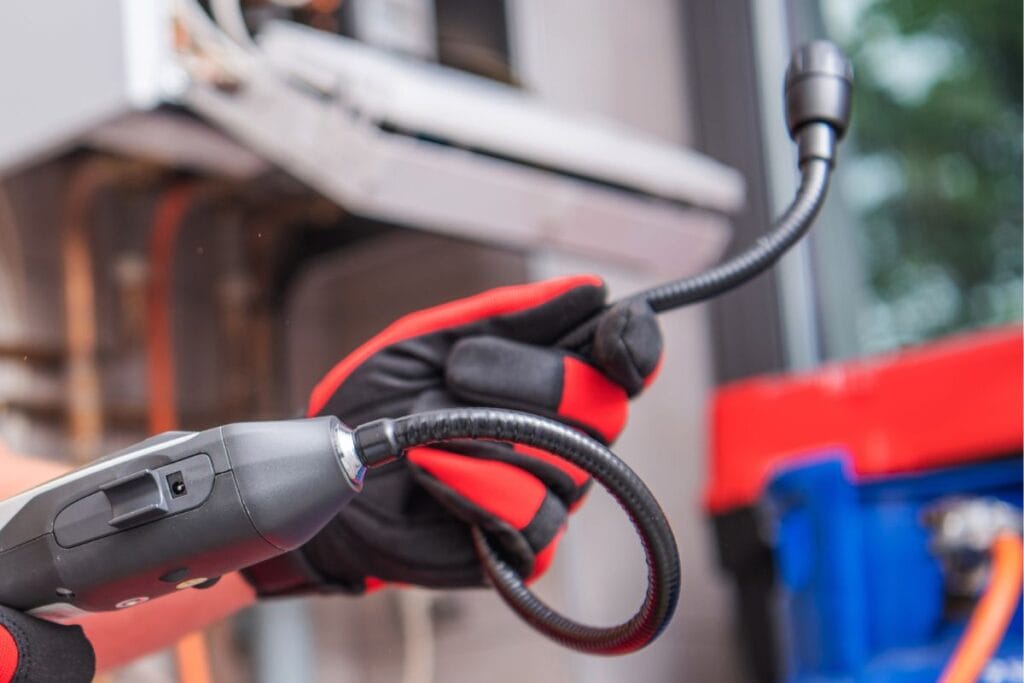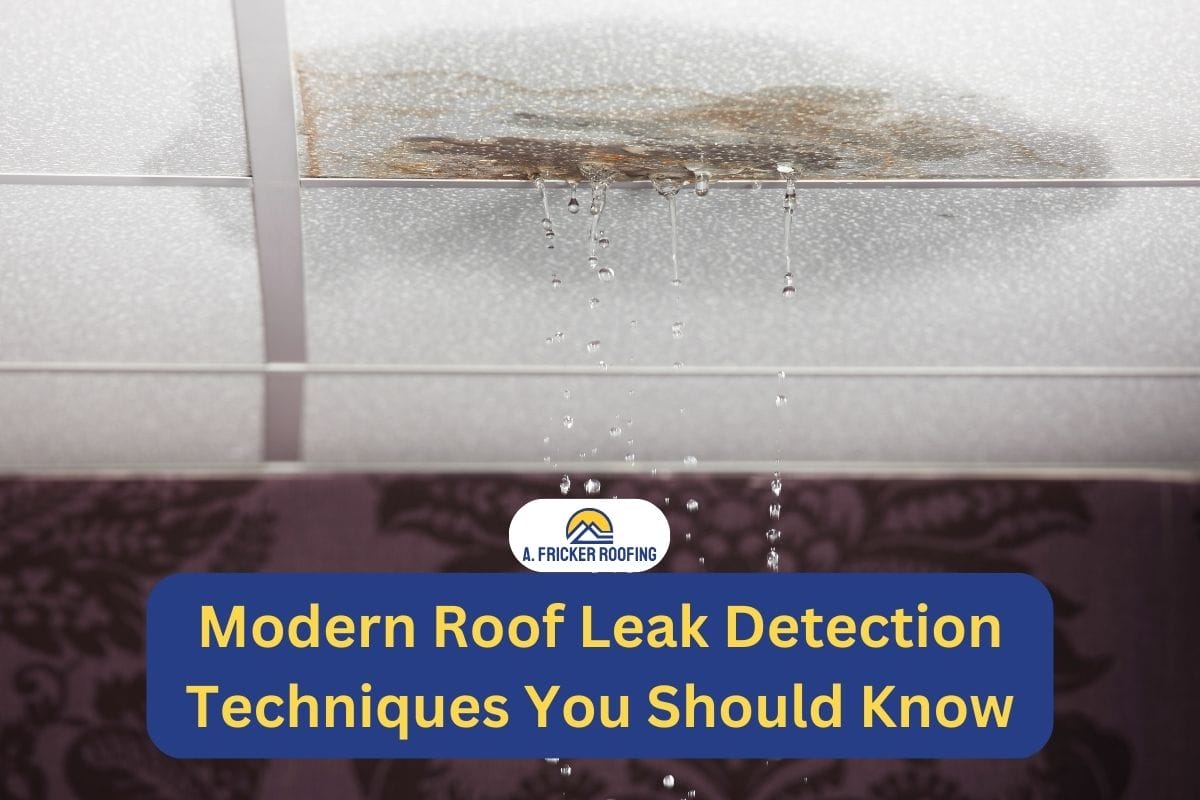Though there are a number of ways to detect roof leaks, including telltale signs like water stains and a roof inspection, some elusive leaks just don’t show up this way. Sometimes, the only way to find a roof leak is to have your roof thoroughly examined by a roofing contractor.
Roof leaks are disruptive, they can damage the underlying roof structure as well as the surrounding shingles and roofing materials. While they usually can be fixed by simply patching holes and applying sealants, the process of roof leak detection can be complex. In this blog post, we will discuss some modern roof leak detection methods that simplify the process and allow you to patch the holes in less time.
The Basics of Roof Leak Detection
Roof leaks can occur due to various reasons, including damaged shingles, clogged gutters, or deteriorating flashing. Traditional detection methods often involve a visual inspection of the roof’s surface, searching for obvious signs like water stains or missing shingles. While these methods are still valuable, modern technology has introduced innovative approaches that can pinpoint leaks with greater precision.
Modern Roof Leak Detection Methods
These new techniques are becoming increasingly popular among roofing professionals in Tulsa, OK.
1. Infrared Roof Leak Detection

Infrared imaging is based on a simple principle that wet objects are generally warmer as compared to dry objects. This basic principle allows roofers to detect the heat caused by moisture on the roof with the help of infrared cameras. Infrared cameras, as the name suggests, capture infrared radiation, which is a part of electromagnetic radiation invisible to human eyes. Any wet surface emits radiation detectable to infrared cameras. Roofers, or thermographers equipped with these sensors or thermal cameras, capture images of different areas of the roof, which then are compiled to create a roof map.
Another advantage of using infrared cameras is that they can identify temperature variations on the roof’s surface, highlighting potential areas of concern. Professional roofers equipped with infrared cameras can quickly and accurately identify leaks, even in areas that are not easily accessible.
2. Electronic Leak Detection

This technology has been widely used over the years in roof leak detection. Based on the simple principle of electric current and its direction of flow, this method is effective even in detecting the tiniest leaks and membrane breaches. While infrared cameras spot the susceptible areas of roof leaks, electronic leak detection locates the exact leak. The electronic roof leak detection method works mainly in two ways: low voltage leak detection and high voltage leak detection. In electronic leak detection, a current is passed through the roofing materials.
If there is a breach in the roofing system, the electric current will flow through the opening, helping technicians pinpoint the exact location of the leak. This precise method can save both time and money, especially when dealing with large commercial roofs.
3. Drone Use for Aerial Roof Inspection

Advancements in drone technology have also found their way into the roofing industry. Drones equipped with high-resolution cameras can provide detailed aerial inspections of roofs, allowing professionals to identify potential issues without having to physically climb onto the roof. This not only enhances safety but also provides a comprehensive overview of the entire roofing system. Drone inspections are particularly useful for large commercial buildings, where accessing the roof may be a challenge.
4. Water Test for Roof Leak Detection
The water test is another roof leak detection method that can be used when there are few options available. Though it may sound simple and a DIY task, it isn’t easier than said. During this process, the water needs to be applied skillfully over the roof so that it doesn’t penetrate the roofing materials. Any mistake made during the application may streamline the flow of water under the roof deck, creating a channel for future leaks.
And this is especially true in the case of sloped roofs, where it can be difficult for the roofers to find the exact location of the roof leak. Leaks are often discovered in a different location on the roof compared to where they appeared inside the attic.
While water is being applied, carefully observe the interior of the building, especially the areas suspected of having leaks. This may include ceilings, walls, or other surfaces where water stains or damage have been noted. If the initial water test does not reveal the source of the leak, repeat the process in different sections of the roof until the problem area is identified.
5. Smart Moisture Attic Sensors
With technology constantly evolving, the use of smart devices and sensors is on the rise. Smart devices are made to work even when you aren’t home. You can incorporate smart sensors in your attic to assess its condition, including temperature, humidity, moisture, and water leaks. Smart moisture sensors can be installed in critical areas of the roof to detect the presence of water before it leads to a full-fledged leak.
These sensors are connected to a monitoring system that alerts property owners or maintenance personnel when moisture levels exceed normal parameters. Early detection allows for prompt action, preventing extensive damage to the roof structure and interior of the building.
Closing Thoughts
As technology continues to advance, so do the tools and techniques available for roof leak detection. While traditional methods remain effective, the integration of infrared technology, electronic leak detection, drones, and smart sensors offers a new level of precision and efficiency in identifying and addressing roof leaks. However, roof leak detection is only the first step in roof leak repair.
Call Professional Roofers in Tulsa for Your Roof Leak Detection and Repair
Do you want to inspect your roof for leaks and any damage? Contact A. Fricker Roofing and Waterproofing in Tulsa, OK! The roofers at the company are proficient at handling any roofing job, including roof inspection and repair. We are knowledgeable and equipped with modern technology to help you identify roof leaks before any severe damage is done. Contact us today at (918) 402-7167 and consult with a professional for your roofing needs.
FAQs
A. It is advisable to have your roof inspected at least once a year, preferably in the spring. However, if you notice any signs of damage or leaks, don’t hesitate to schedule an inspection.
A. While the cost may vary, the long term savings resulting from early leak detection often outweigh the initial investment. Consider it a proactive measure to protect your property.
A. Electronic leak detection is particularly effective on flat or low slope roofs, commonly found on commercial buildings. It may not be as applicable to steep sloped residential roofs.

